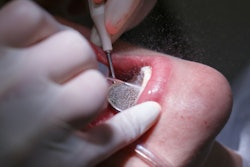
When was the last time you tested your water lines? If you don't know, then you may be putting your practice and patients at risk. That's why infection-control expert Jessica Wilson, MPH, shared several water line maintenance tips at the recent California Dental Association's CDA Presents 2018 meeting in San Francisco.
The message is especially timely in the state since a bacterial outbreak in Anaheim, CA, left dozens of children hospitalized in 2016. To prevent a similar occurrence in your practice, Wilson, an infection prevention specialist at Hu-Friedy, had one key takeaway message: Test your water.
"Go back and test your water," she said. "Because in order to know the biofilm counts in your water, you have to do a test."
5 tips
Here are five tips to help prevent a bacterial outbreak with your water lines.
1. Regularly test your water lines
Biofilm can form along the walls of water lines, similar to how plaque forms on teeth. A little bacterial buildup probably won't cause much trouble, but if too many biofilm colonies form inside a practice's water lines, it can put immunocompromised and even healthy patients at risk.
 Jessica Wilson, MPH.
Jessica Wilson, MPH.Therefore, the first step to preventing a bacterial outbreak is to regularly test the colony forming unit (CFU) count of your water lines. The federal government recommends that water used for nonsurgical dental procedures measure at 500 CFU/mL or fewer, which is also the standard set by the U.S. Environmental Protection Agency for safe drinking water
Two types of tests measure the CFU count of your water, and both have their pros and cons, Wilson noted. The first, professional testing, gives very specific results, including exactly what's in your water and at what level. However, vials must be kept cool and shipped overnight, which makes this option more costly.
The second, in-office testing, is often easier and less expensive than professional testing. However, the results are simply pass or fail, so you don't know the exact bacterial count in your water lines.
Finally, Wilson recommended testing your water every three months and taking samples from all dental operatories.
"Some of your rooms may fail and some may pass depending on how you're using it, how you're treating it," Wilson said.
2. Know the symptoms of bacterial buildup
Biofilm can come from the treatment plant, filling bottles, exposed tubing, and retraction from patient's mouths. Water lines with bacterial backup sometimes have warning signs that there's a buildup, but not all symptoms are obvious.
For instance, you may suspect there's a biofilm buildup if your water line is clogged. However, other symptoms of harmful biofilm can include turbines that need frequent repair or equipment that becomes corroded.
"Water can cause corrosion," Wilson said. "The water quality sometimes affects your instruments, and you don't even notice."
3. Don't assume that high-quality water is all you need
Just because you're using high-quality, sterile water, it doesn't necessarily mean that your practice is free of biofilm. Sometimes, bacteria can come from the water source, but it can also come from other places, including patients' mouths.
“Go back and test your water.”
To illustrate her point, Wilson used the example of a green swimming pool after winter. It doesn't matter if the pool's owners fill the basin with the highest-quality water available for purchase, it still will be full of bacteria if they don't remove the buildup from the walls first.
Water lines work the same way. If you're not properly maintaining your water lines, it doesn't matter if you use the most sterile water you can find.
"The reason for testing your water is to test that your product is actually effective," Wilson said. "And that the user is actually using it correctly."
4. Create a schedule -- and stick to it
There's a saying in the business world that what gets measured gets managed, and the same applies to your dental practice. To make sure your water lines are being properly maintained and tested, it's important to set up -- and stick to -- a schedule.
"Documentation is everything," Wilson said. "If it's not documented, it didn't happen."
The schedule should include your quarterly water testing and also the daily, weekly, and monthly maintenance tasks. This way, important but not seemingly urgent tasks, such as cleaning the water lines to your eyewash station, aren't forgotten in the daily shuffle.
"We're very busy people. It's amazing how fast 24 hours goes," Wilson said. "If it's no one's job, it's no one's job."
5. Get everyone on the same page
Although your practice should have a designated infection-control coordinator, everyone should know the infection-control policies and contribute to keeping the practice a safe, infection-free workplace.
"Infection control is a team sport," Wilson said.
One way to get everyone on the same page is to create a binder for instructions for use. This binder should have all the details about how to maintain the water lines, including instructions for each of the products your office uses.
"The big thing is to follow the manufacturer's instructions to clean and disinfect the dental unit at recommended intervals," Wilson said.
Everyone in the office should know where the binder is, and everyone should be trained on how to maintain and test waterlines, Wilson said. You can also inform your team about updates at the team meeting.
"When you're doing things, you get into habits," she said. "It's hard to enact change. But it's ultimately good for you."



















